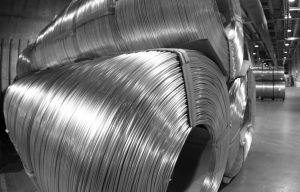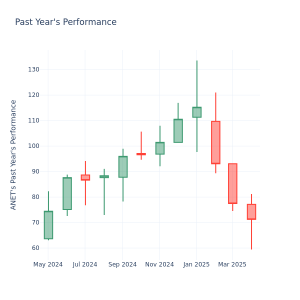The U.S. economy and global markets are once again experiencing turbulence following President Donald Trump’s announcement on April 2 of “reciprocal tariffs” of at least 10% for many countries.
The S&P 500 index lost 10% in the two days following the tariff announcement, while the tech-heavy Nasdaq composite tumbled 11%.
💵💰Don’t miss the move: Subscribe to TheStreet’s free daily newsletter 💰💵
The steep tariffs could weigh heavily on U.S. consumers and enterprises as products imported could cost more.
“We view this as kind of a growth shock… this is going to be a hit to U.S. consumers,” Ashish Shah, Goldman Sachs’s chief investment officer of public investing, said on April 3.
While the White House said semiconductors are excluded from tariffs, the disruption could still ripple through downstream electronics manufacturing and could impact demand for semiconductors.
On April 3, 2025, the Philadelphia Semiconductor Index plummeted nearly 10%, outpacing the broader S&P 500 Index’s 5% drop. It fell another 7.6% on April 4.
Nvidia, often viewed as the bellwether for AI-driven chip demand, has not been spared. The stock lost more than 14% across the two sessions.
Analysts at HSBC downgraded Nvidia’s stock following the latest tariffs, citing limited GPU pricing power going forward and increasing mismatches in the supply chain. It wasn’t the only Wall Street firm to weigh in.
Bank of America also updated its Nvidia stock forecast.
Even before the tariff announcement, Nvidia (NVDA) had been wrestling with headwinds.
The chipmaker, long a darling of Wall Street for its dominance in artificial intelligence, saw its stock sink nearly 20% in Q1 2025, weighed down by the rollout of China’s cheap AI model, DeepSeek, disappointing earnings, and a broader tech sell-off caused by economic uncertainties.
Related: Billionaire Bill Ackman delivers frank 3-word message on tariff war
Nvidia’s revenue growth, once soaring at triple-digit rates, slowed to 78% year-over-year in the fourth quarter of 2024—still solid but a comedown for investors who had hoped for more.
Meanwhile, despite Nvidia CEO Jensen Huang highlighting many times that the demand for Blackwell is “extraordinary,” keeping up with that demand has started to pressure the company’s profit margins.
The company reported a non-GAAP 73.5% gross margin for Q4, which was 3.2 points shy of a year earlier. It attributed the smaller profit margin to newer, more complicated, and costly data center products, including Blackwell.


